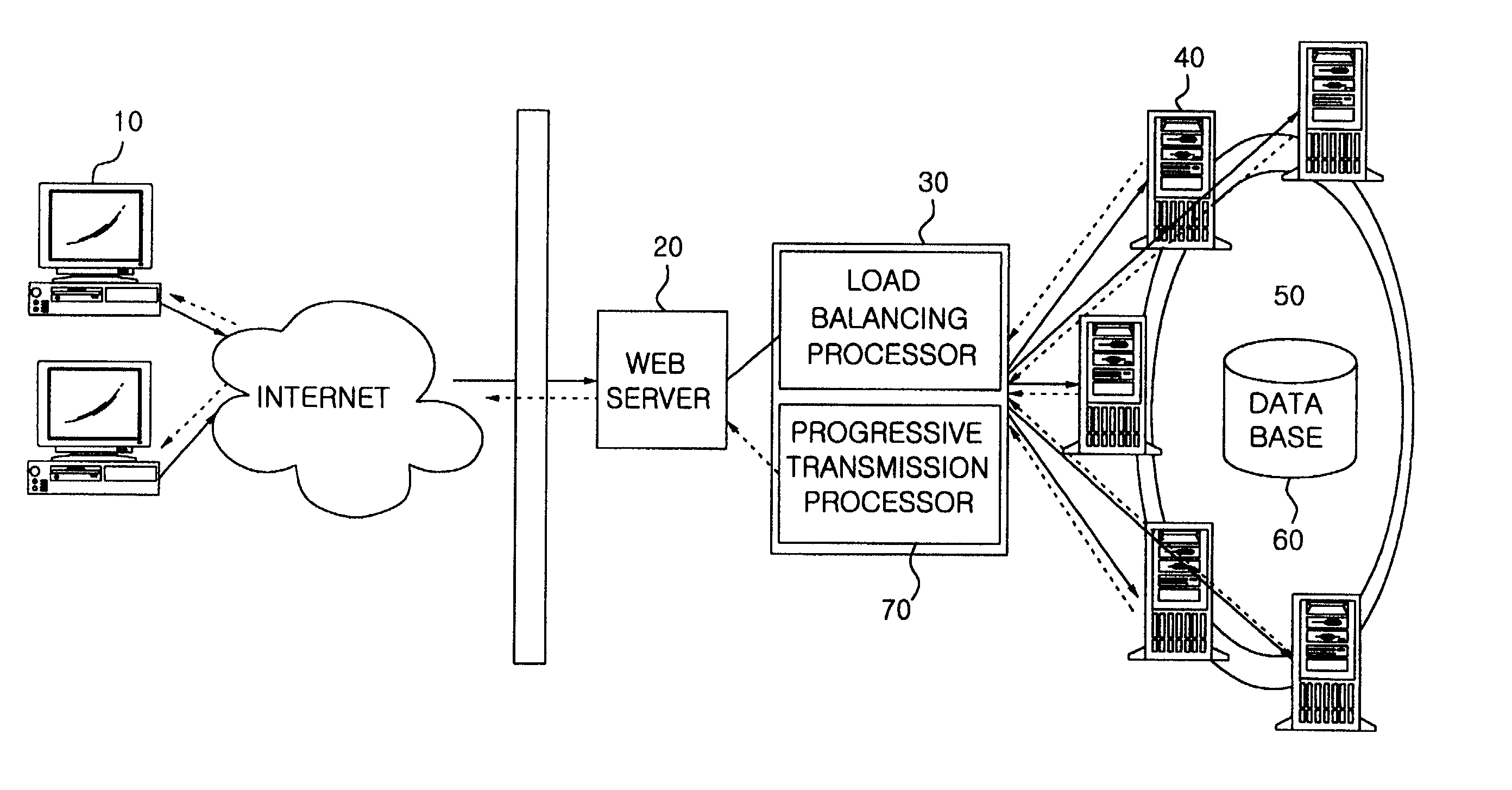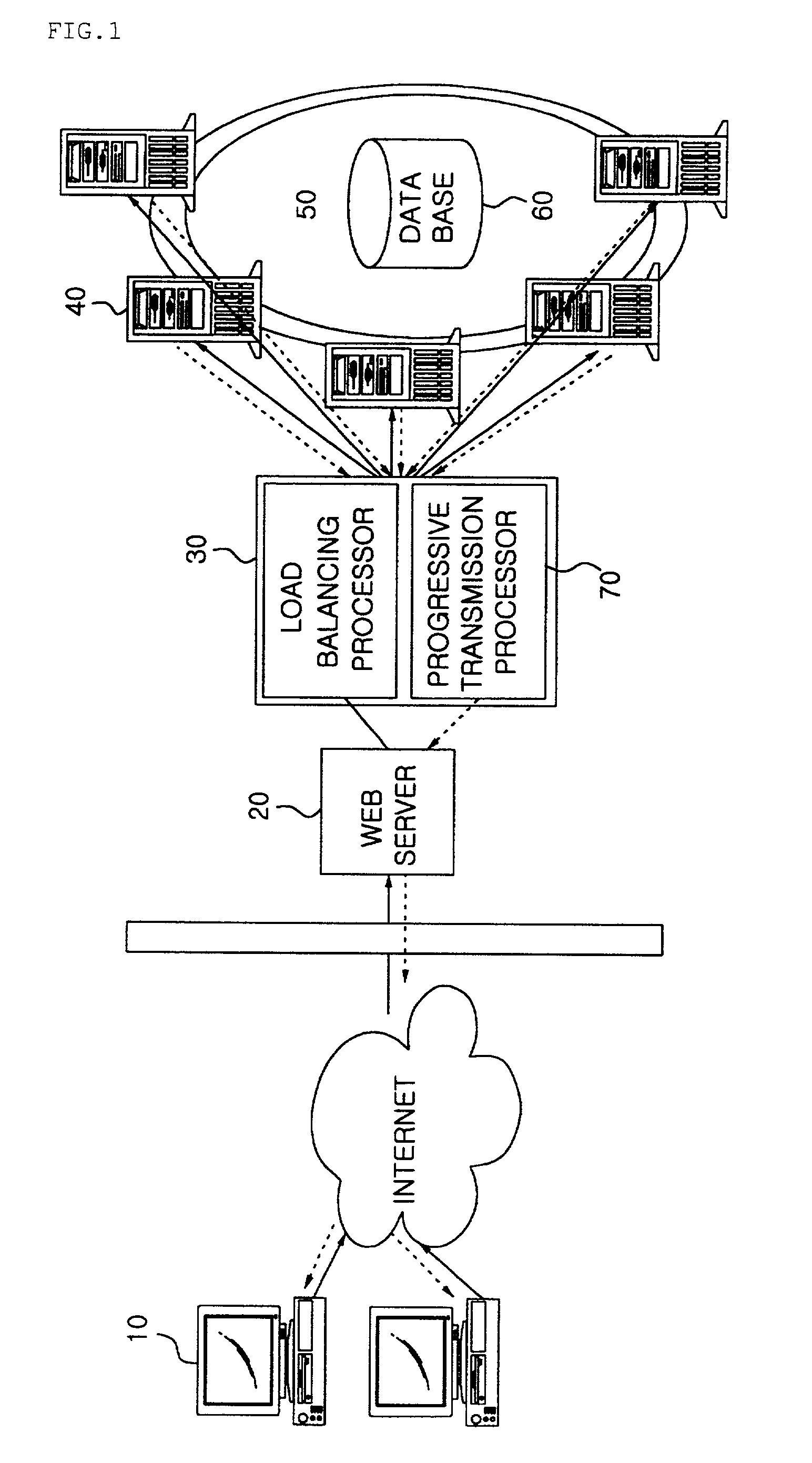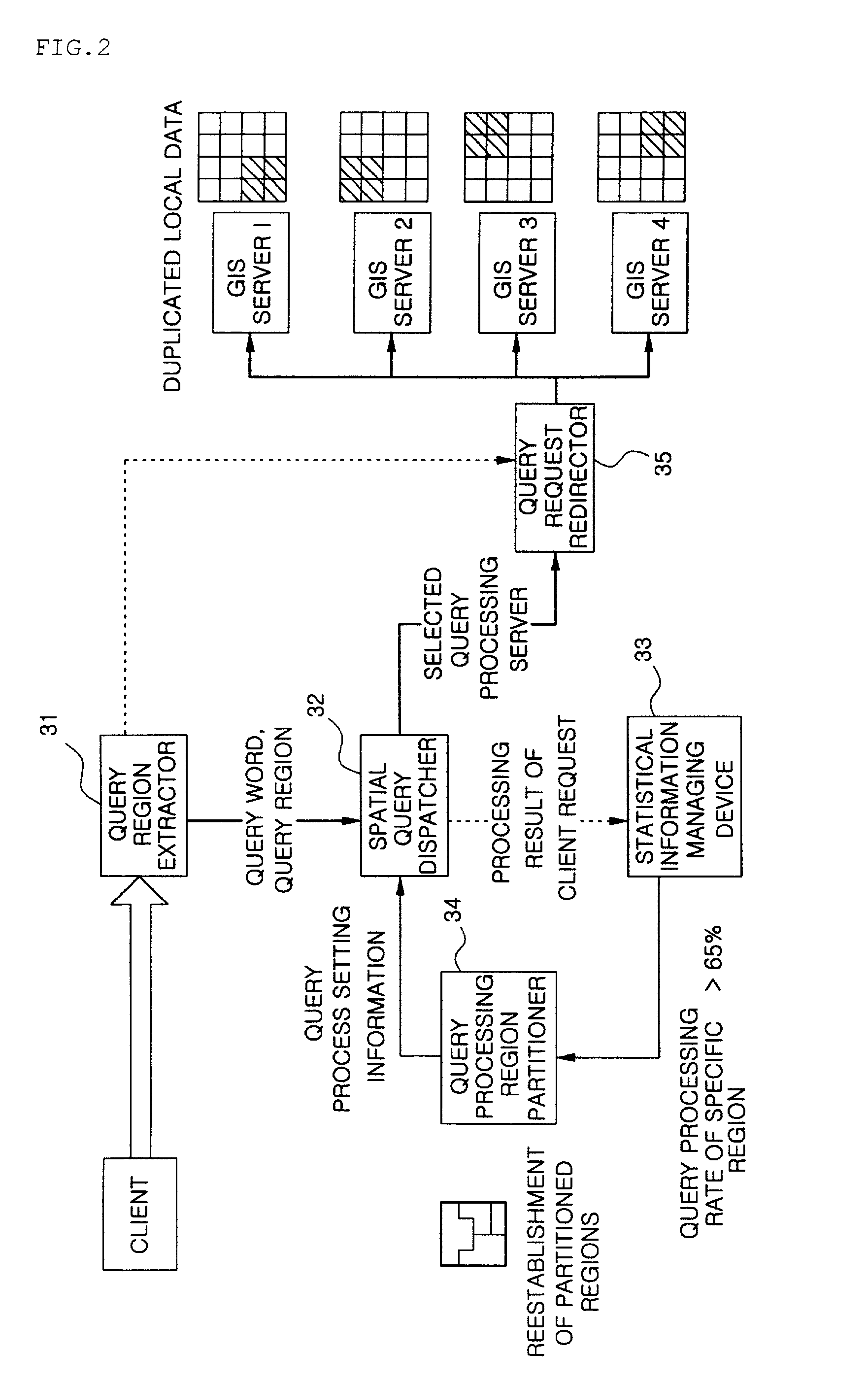Vector-based, clustering web geographic information system and control method thereof
a geographic information system and clustering technology, applied in the field of clustering web geographic information systems, can solve the problems of inconvenient user, inability to achieve efficient load balancing in the clustering server system of the service interruption problems of the vector-based system in this clustering method on web server level, so as to improve the reliability and stability of the clustering web geographic information system, efficient load balancing, and maximize the performance of the server
- Summary
- Abstract
- Description
- Claims
- Application Information
AI Technical Summary
Benefits of technology
Problems solved by technology
Method used
Image
Examples
Embodiment Construction
[0031]Hereinafter, preferred embodiments of the present invention will be described in detail with reference to the attached drawings.
[0032]FIG. 1 illustrates the architecture of a vector-based, clustering Web geographic information system according to the present invention. The system of FIG. 1 comprises at least one client 10, a Web server 20, a load balancing processor 30, a progressive transmission processor 70, a clustering device 50, a plurality of geographic information system (GIS) servers 40, and a spatial / non-spatial database 60.
[0033]The client 10 downloads a Web page from the Web server through a Web browser, receives vector data of a region requested by a user by communicating with a corresponding control server or an applet server using a hypertext transfer protocol (HTTP), and displays the received data on a screen. The Web server 20 transmits all spatial queries received from an object downloaded to the client 10 to the load balancing processor 30.
[0034]The load bala...
PUM
 Login to View More
Login to View More Abstract
Description
Claims
Application Information
 Login to View More
Login to View More - R&D
- Intellectual Property
- Life Sciences
- Materials
- Tech Scout
- Unparalleled Data Quality
- Higher Quality Content
- 60% Fewer Hallucinations
Browse by: Latest US Patents, China's latest patents, Technical Efficacy Thesaurus, Application Domain, Technology Topic, Popular Technical Reports.
© 2025 PatSnap. All rights reserved.Legal|Privacy policy|Modern Slavery Act Transparency Statement|Sitemap|About US| Contact US: help@patsnap.com



